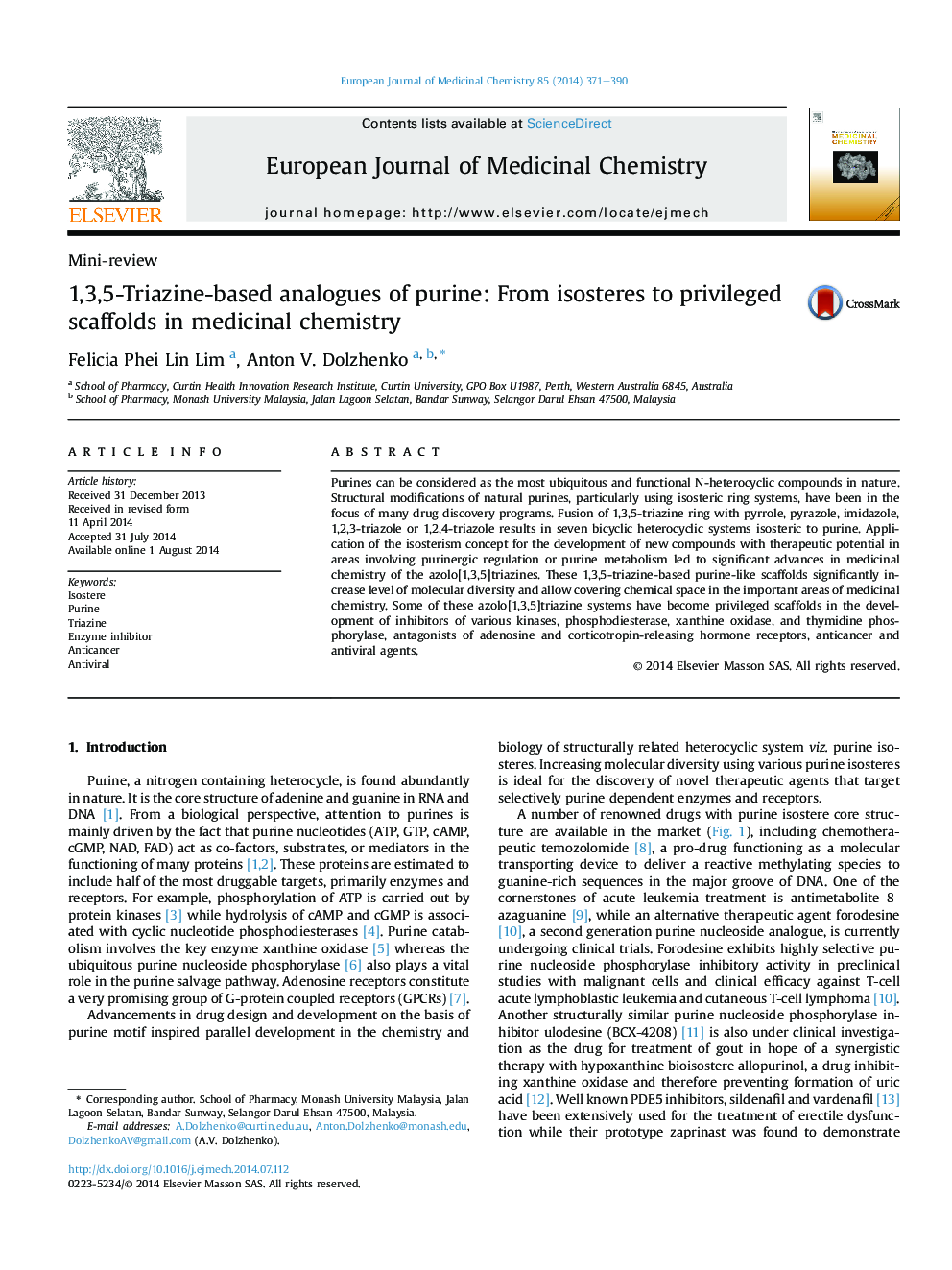| Article ID | Journal | Published Year | Pages | File Type |
|---|---|---|---|---|
| 1392307 | European Journal of Medicinal Chemistry | 2014 | 20 Pages |
•Purine bioisosteres in drug discovery and development.•1,3,5-Triazine-based purine analogues as enzyme inhibitors.•1,3,5-Triazine-based purine analogues as receptor ligands.•1,3,5-Triazine-based purine analogues as antiviral and anticancer agents.
Purines can be considered as the most ubiquitous and functional N-heterocyclic compounds in nature. Structural modifications of natural purines, particularly using isosteric ring systems, have been in the focus of many drug discovery programs. Fusion of 1,3,5-triazine ring with pyrrole, pyrazole, imidazole, 1,2,3-triazole or 1,2,4-triazole results in seven bicyclic heterocyclic systems isosteric to purine. Application of the isosterism concept for the development of new compounds with therapeutic potential in areas involving purinergic regulation or purine metabolism led to significant advances in medicinal chemistry of the azolo[1,3,5]triazines. These 1,3,5-triazine-based purine-like scaffolds significantly increase level of molecular diversity and allow covering chemical space in the important areas of medicinal chemistry. Some of these azolo[1,3,5]triazine systems have become privileged scaffolds in the development of inhibitors of various kinases, phosphodiesterase, xanthine oxidase, and thymidine phosphorylase, antagonists of adenosine and corticotropin-releasing hormone receptors, anticancer and antiviral agents.
Graphical abstractFigure optionsDownload full-size imageDownload as PowerPoint slide
